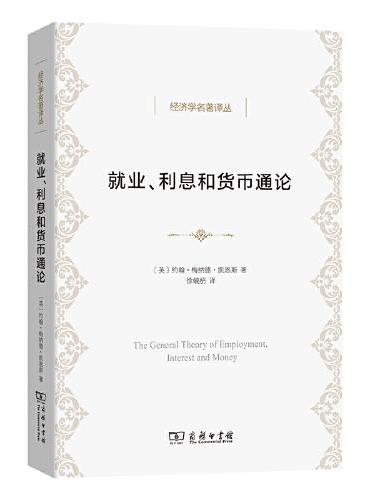新書推薦:

《
传播的跃迁:人工智能如何革新人类的交流
》
售價:HK$
110.9

《
纯粹·古代中国的历史与制度
》
售價:HK$
62.7

《
生活来来往往 别等来日方长 新版(伍佰:“讲好了这一辈子,再度重相逢。”别等,别遗憾!珍惜当下才是最好的解药)
》
售價:HK$
58.2

《
一个英国军事顾问眼中的二战
》
售價:HK$
277.8

《
就业、利息和货币通论(徐毓枬译本)(经济学名著译丛)
》
售價:HK$
67.2

《
瘦肝
》
售價:HK$
99.7

《
股票大作手回忆录
》
售價:HK$
55.8

《
秩序四千年:人类如何运用法律缔造文明(世界重归混乱,文明岌岌可危,法律与秩序是我们仅有的武器。穿越时间,鸟瞰全球,一部波澜壮阔的人类文明史)
》
售價:HK$
154.6
|
| 編輯推薦: |
|
尽管物理学家提出了一些新理论,但相对论目前依然是唯一成熟的现代引力理论。而对于相对论的研究也远远没有走到尽头,其丰富内涵依然有待发掘。《广义相对论的3+1形式》讲述了相对论的基本理论和数值方法的基础。对于从事或有志于从事相对论研究的研究人员或研究生,本书都是不可错过的杰作。
|
| 內容簡介: |
|
《广义相对论的3+1形式》详细地讲解了3+1形式的广义相对论和数值相对论基础。本书从研究相对论所必备的数学工具,如微分几何、超曲面的嵌入等讲起,逐步引入了爱因斯坦方程、物质和电磁场方程等的3+1分解。之后,通过更高等的数学工具,如共形变换等,讨论了现代相对论的一些重要问题。
|
| 關於作者: |
|
古尔古隆E. Gourgoulhon,法国LUTh教授。
|
| 目錄:
|
1 Introduction . . . . . . . . . . . . . . . . . . . . . . . . . . . . . . . . . . . . . . . . 1
References . . . . . . . . . . . . . . . . . . . . . . . . . . . . . . . . . . . . . . . . . 2
2 Basic Differential Geometry . . . . . . . . . . . . . . . . . . . . . . . . . . . . 5
2.1 Introduction . . . . . . . . . . . . . . . . . . . . . . . . . . . . . . . . . . . . 5
2.2 Differentiable Manifolds . . . . . . . . . . . . . . . . . . . . . . . . . . . 6
2.2.1 Notion of Manifold. . . . . . . . . . . . . . . . . . . . . . . . . 6
2.2.2 Vectors on a Manifold . . . . . . . . . . . . . . . . . . . . . . 8
2.2.3 Linear Forms . . . . . . . . . . . . . . . . . . . . . . . . . . . . . 10
2.2.4 Tensors . . . . . . . . . . . . . . . . . . . . . . . . . . . . . . . . . 12
2.2.5 Fields on a Manifold. . . . . . . . . . . . . . . . . . . . . . . . 13
2.3 Pseudo-Riemannian Manifolds . . . . . . . . . . . . . . . . . . . . . . . 13
2.3.1 Metric Tensor . . . . . . . . . . . . . . . . . . . . . . . . . . . . 13
2.3.2 Signature and Orthonormal Bases. . . . . . . . . . . . . . . 14
2.3.3 Metric Duality . . . . . . . . . . . . . . . . . . . . . . . . . . . . 15
2.3.4 Levi-Civita Tensor . . . . . . . . . . . . . . . . . . . . . . . . . 17
2.4 Covariant Derivative . . . . . . . . . . . . . . . . . . . . . . . . . . . . . . 17
2.4.1 Affine Connection on a Manifold . . . . . . . . . . . . . . . 17
2.4.2 Levi-Civita Connection. . . . . . . . . . . . . . . . . . . . . . 20
2.4.3 Curvature . . . . . . . . . . . . . . . . . . . . . . . . . . . . . . . 22
2.4.4 Weyl Tensor . . . . . . . . . . . . . . . . . . . . . . . . . . . . . 24
2.5 Lie Derivative . . . . . . . . . . . . . . . . . . . . . . . . . . . . . . . . . . 25
2.5.1 Lie Derivative of a Vector Field. . . . . . . . . . . . . . . . 25
2.5.2 Generalization to Any Tensor Field . . . . . . . . . . . . . 27
References . . . . . . . . . . . . . . . . . . . . . . . . . . . . . . . . . . . . . . . . . 28
3 Geometry of Hypersurfaces . . . . . . . . . . . . . . . . . . . . . . . . . . . . 29
3.1 Introduction . . . . . . . . . . . . . . . . . . . . . . . . . . . . . . . . . . . . 29
3.2 Framework and Notations . . . . . . . . . . . . . . . . . . . . . . . . . . 29
3.3 Hypersurface Embedded in Spacetime. . . . . . . . . . . . . . . . . . 30
3.3.1 Definition . . . . . . . . . . . . . . . . . . . . . . . . . . . . . . . 30
3.3.2 Normal Vector . . . . . . . . . . . . . . . . . . . . . . . . . . . . 32
3.3.3 Intrinsic Curvature . . . . . . . . . . . . . . . . . . . . . . . . . 33
3.3.4 Extrinsic Curvature . . . . . . . . . . . . . . . . . . . . . . . . . 34
3.3.5 Examples: Surfaces Embedded in the
Euclidean Space R3 . . . . . . . . . . . . . . . . . . . . . . . . 36
3.3.6 An Example in Minkowski Spacetime:
The Hyperbolic Space H3 . . . . . . . . . . . . . . . . . . . . 40
3.4 Spacelike Hypersurfaces . . . . . . . . . . . . . . . . . . . . . . . . . . . 43
3.4.1 The Orthogonal Projector . . . . . . . . . . . . . . . . . . . . 44
3.4.2 Relation Between K and rn . . . . . . . . . . . . . . . . . . 46
3.4.3 Links Between the r and D Connections . . . . . . . . . 47
3.5 Gauss-Codazzi Relations. . . . . . . . . . . . . . . . . . . . . . . . . . . 49
3.5.1 Gauss Relation . . . . . . . . . . . . . . . . . . . . . . . . . . . . 50
3.5.2 Codazzi Relation . . . . . . . . . . . . . . . . . . . . . . . . . . 52
References . . . . . . . . . . . . . . . . . . . . . . . . . . . . . . . . . . . . . . . . . 54
4 Geometry of Foliations . . . . . . . . . . . . . . . . . . . . . . . . . . . . . . . . 55
4.1 Introduction . . . . . . . . . . . . . . . . . . . . . . . . . . . . . . . . . . . . 55
4.2 Globally Hyperbolic Spacetimes and Foliations . . . . . . . . . . . 55
4.2.1 Globally Hyperbolic Spacetimes. . . . . . . . . . . . . . . . 55
4.2.2 Definition of a Foliation . . . . . . . . . . . . . . . . . . . . . 56
4.3 Foliation Kinematics . . . . . . . . . . . . . . . . . . . . . . . . . . . . . . 57
4.3.1 Lapse Function. . . . . . . . . . . . . . . . . . . . . . . . . . . . 57
4.3.2 Normal Evolution Vector . . . . . . . . . . . . . . . . . . . . 57
4.3.3 Eulerian Observers . . . . . . . . . . . . . . . . . . . . . . . . . 60
4.3.4 Gradients of n and m . . . . . . . . . . . . . . . . . . . . . . . 63
4.3.5 Evolution of the 3-Metric . . . . . . . . . . . . . . . . . . . . 64
4.3.6 Evolution of the Orthogonal Projector. . . . . . . . . . . . 66
4.4 Last Part of the 3+1 Decomposition of the Riemann Tensor . . . 67
4.4.1 Last Non Trivial Projection of the Spacetime
Riemann Tensor . . . . . . . . . . . . . . . . . . . . . . . . . . . 67
4.4.2 3+1 Expression of the Spacetime Scalar Curvature . . . 69
References . . . . . . . . . . . . . . . . . . . . . . . . . . . . . . . . . . . . . . . . . 71
5 3+1 Decomposition of Einstein Equation . . . . . . . . . . . . . . . . . . . 73
5.1 Einstein Equation in 3+1 form . . . . . . . . . . . . . . . . . . . . . . . 73
5.1.1 The Einstein Equation. . . . . . . . . . . . . . . . . . . . . . . 73
5.1.2 3+1 Decomposition of the Stress-Energy Tensor . . . . 74
5.1.3 Projection of the Einstein Equation. . . . . . . . . . . . . . 76
5.2 Coordinates Adapted to the Foliation . . . . . . . . . . . . . . . . . . 78
5.2.1 Definition . . . . . . . . . . . . . . . . . . . . . . . . . . . . . . . 78
5.2.2 Shift Vector . . . . . . . . . . . . . . . . . . . . . . . . . . . . . . 79
5.2.3 3+1 Writing of the Metric Components . . . . . . . . . . 82
5.2.4 Choice of Coordinates via the Lapse and the Shift . . . 85
5.3 3+1 Einstein Equation as a PDE System . . . . . . . . . . . . . . . . 86
5.3.1 Lie Derivatives Along m as Partial Derivatives . . . . . 86
5.3.2 3+1 Einstein System . . . . . . . . . . . . . . . . . . . . . . . . 87
5.4 The Cauchy Problem . . . . . . . . . . . . . . . . . . . . . . . . . . . . . 88
5.4.1 General Relativity as a Three-Dimensional
Dynamical System . . . . . . . . . . . . . . . . . . . . . . . . . 88
5.4.2 Analysis Within Gaussian Normal Coordinates . . . . . 89
5.4.3 Constraint Equations . . . . . . . . . . . . . . . . . . . . . . . . 92
5.4.4 Existence and Uniqueness of Solutions
to the Cauchy Problem . . . . . . . . . . . . . . . . . . . . . . 92
5.5 ADM Hamiltonian Formulation . . . . . . . . . . . . . . . . . . . . . . 94
5.5.1 3+1 form of the Hilbert Action . . . . . . . . . . . . . . . . 94
5.5.2 Hamiltonian Approach . . . . . . . . . . . . . . . . . . . . . . 95
References . . . . . . . . . . . . . . . . . . . . . . . . . . . . . . . . . . . . . . . . . 98
6 3+1 Equations for Matter and Electromagnetic Field. . . . . . . . . . 101
6.1 Introduction . . . . . . . . . . . . . . . . . . . . . . . . . . . . . . . . . . . . 101
6.2 Energy and Momentum Conservation . . . . . . . . . . . . . . . . . . 102
6.2.1 3+1 Decomposition of the 4-Dimensional
Equation . . . . . . . . . . . . . . . . . . . . . . . . . . . . . . . . 102
6.2.2 Energy Conservation. . . . . . . . . . . . . . . . . . . . . . . . 102
6.2.3 Newtonian Limit . . . . . . . . . . . . . . . . . . . . . . . . . . 104
6.2.4 Momentum Conservation. . . . . . . . . . . . . . . . . . . . . 105
6.3 Perfect Fluid . . . . . . . . . . . . . . . . . . . . . . . . . . . . . . . . . . . 106
6.3.1 Kinematics. . . . . . . . . . . . . . . . . . . . . . . . . . . . . . . 106
6.3.2 Baryon Number Conservation . . . . . . . . . . . . . . . . . 109
6.3.3 Dynamical Quantities . . . . . . . . . . . . . . . . . . . . . . . 111
6.3.4 Energy Conservation Law . . . . . . . . . . . . . . . . . . . . 112
6.3.5 Relativistic Euler Equation . . . . . . . . . . . . . . . . . . . 113
6.3.6 Flux-Conservative Form . . . . . . . . . . . . . . . . . . . . . 114
6.3.7 Further Developments . . . . . . . . . . . . . . . . . . . . . . . 117
6.4 Electromagnetism . . . . . . . . . . . . . . . . . . . . . . . . . . . . . . . . 117
6.4.1 Electromagnetic Field . . . . . . . . . . . . . . . . . . . . . . . 117
6.4.2 3+1 Maxwell Equations. . . . . . . . . . . . . . . . . . . . . . 119
6.4.3 Electromagnetic Energy, Momentum and Stress . . . . . 122
6.5 3+1 Ideal Magnetohydrodynamics . . . . . . . . . . . . . . . . . . . . 123
6.5.1 Basic Settings . . . . . . . . . . . . . . . . . . . . . . . . . . . . 123
6.5.2 Maxwell Equations . . . . . . . . . . . . . . . . . . . . . . . . . 125
6.5.3 Electromagnetic Energy, Momentum and Stress . . . . . 127
6.5.4 MHD-Euler Equation . . . . . . . . . . . . . . . . . . . . . . . 127
6.5.5 MHD in Flux-Conservative Form . . . . . . . . . . . . . . . 129
References . . . . . . . . . . . . . . . . . . . . . . . . . . . . . . . . . . . . . . . . . 130
7 Conformal Decomposition. . . . . . . . . . . . . . . . . . . . . . . . . . . . . . 133
7.1 Introduction . . . . . . . . . . . . . . . . . . . . . . . . . . . . . . . . . . . . 133
7.2 Conformal Decomposition of the 3-Metric. . . . . . . . . . . . . . . 135
7.2.1 Unit-Determinant Conformal ''''Metric''''. . . . . . . . . . . 135
7.2.2 Background Metric . . . . . . . . . . . . . . . . . . . . . . . . . 135
7.2.3 Conformal Metric . . . . . . . . . . . . . . . . . . . . . . . . . . 136
7.2.4 Conformal Connection . . . . . . . . . . . . . . . . . . . . . . 138
7.3 Expression of the Ricci Tensor . . . . . . . . . . . . . . . . . . . . . . 141
7.3.1 General Formula Relating the Two Ricci Tensors . . . 141
7.3.2 Expression in Terms of the Conformal Factor . . . . . . 142
7.3.3 Formula for the Scalar Curvature . . . . . . . . . . . . . . . 142
7.4 Conformal Decomposition of the Extrinsic Curvature . . . . . . . 143
7.4.1 Traceless Decomposition . . . . . . . . . . . . . . . . . . . . . 143
7.4.2 Conformal Decomposition of the Traceless Part . . . . . 144
7.5 Conformal Form of the 3+1 Einstein System . . . . . . . . . . . . . 147
7.5.1 Dynamical Part of Einstein Equation . . . . . . . . . . . . 147
7.5.2 Hamiltonian Constraint . . . . . . . . . . . . . . . . . . . . . . 150
7.5.3 Momentum Constraint. . . . . . . . . . . . . . . . . . . . . . . 151
7.5.4 Summary: Conformal 3+1 Einstein System . . . . . . . . 151
7.6 Isenberg-Wilson-Mathews Approximation
to General Relativity. . . . . . . . . . . . . . . . . . . . . . . . . . . . . . 152
References . . . . . . . . . . . . . . . . . . . . . . . . . . . . . . . . . . . . . . . . . 156
8 Asymptotic Flatness and Global Quantities . . . . . . . . . . . . . . . . . 159
8.1 Introduction . . . . . . . . . . . . . . . . . . . . . . . . . . . . . . . . . . . . 159
8.2 Asymptotic Flatness . . . . . . . . . . . . . . . . . . . . . . . . . . . . . . 159
8.2.1 Definition . . . . . . . . . . . . . . . . . . . . . . . . . . . . . . . 160
8.2.2 Asymptotic Coordinate Freedom . . . . . . . . . . . . . . . 161
8.3 ADM Mass . . . . . . . . . . . . . . . . . . . . . . . . . . . . . . . . . . . . 162
8.3.1 Definition from the Hamiltonian
Formulation of GR . . . . . . . . . . . . . . . . . . . . . . . . . 162
8.3.2 Expression in Terms of the Conformal
Decomposition . . . . . . . . . . . . . . . . . . . . . . . . . . . . 167
8.3.3 Newtonian Limit . . . . . . . . . . . . . . . . . . . . . . . . . . 169
8.3.4 Positive Energy Theorem . . . . . . . . . . . . . . . . . . . . 170
8.3.5 Constancy of the ADM Mass. . . . . . . . . . . . . . . . . . 171
8.4 ADM Momentum . . . . . . . . . . . . . . . . . . . . . . . . . . . . . . . . 171
8.4.1 Definition . . . . . . . . . . . . . . . . . . . . . . . . . . . . . . . 171
8.4.2 ADM 4-Momentum . . . . . . . . . . . . . . . . . . . . . . . . 172
8.5 Angular Momentum . . . . . . . . . . . . . . . . . . . . . . . . . . . . . . 172
8.5.1 The Supertranslation Ambiguity . . . . . . . . . . . . . . . . 172
8.5.2 The ''''Cure'''' . . . . . . . . . . . . . . . . . . . . . . . . . . . . . . 173
8.5.3 ADM Mass in the Quasi-Isotropic Gauge . . . . . . . . . 174
8.6 Komar Mass and Angular Momentum. . . . . . . . . . . . . . . . . . 176
xiv Contents
8.6.1 Komar Mass . . . . . . . . . . . . . . . . . . . . . . . . . . . . . 176
8.6.2 3+1 Expression of the Komar Mass and Link
with the ADM Mass . . . . . . . . . . . . . . . . . . . . . . . . 179
8.6.3 Komar Angular Momentum. . . . . . . . . . . . . . . . . . . 182
References . . . . . . . . . . . . . . . . . . . . . . . . . . . . . . . . . . . . . . . . . 185
9 The Initial Data Problem . . . . . . . . . . . . . . . . . . . . . . . . . . . . . . 187
9.1 Introduction . . . . . . . . . . . . . . . . . . . . . . . . . . . . . . . . . . . . 187
9.1.1 The Initial Data Problem . . . . . . . . . . . . . . . . . . . . . 187
9.1.2 Conformal Decomposition of the Constraints . . . . . . . 188
9.2 Conformal Transverse-Traceless Method . . . . . . . . . . . . . . . . 189
9.2.1 Longitudinal Transverse Decomposition of ^A
ij . . . . . 189
9.2.2 Conformal Transverse-Traceless Form
of the Constraints . . . . . . . . . . . . . . . . . . . . . . . . . . 191
9.2.3 Decoupling on Hypersurfaces of Constant
Mean Curvature . . . . . . . . . . . . . . . . . . . . . . . . . . . 192
9.2.4 Existence and Uniqueness of Solutions
to Lichnerowicz Equation . . . . . . . . . . . . . . . . . . . . 193
9.2.5 Conformally Flat and Momentarily Static
Initial Data . . . . . . . . . . . . . . . . . . . . . . . . . . . . . . 194
9.2.6 Bowen-York Initial Data. . . . . . . . . . . . . . . . . . . . . 200
9.3 Conformal Thin Sandwich Method . . . . . . . . . . . . . . . . . . . . 204
9.3.1 The Original Conformal Thin Sandwich Method . . . . 204
9.3.2 Extended Conformal Thin Sandwich Method . . . . . . . 205
9.3.3 XCTS at Work: Static Black Hole Example . . . . . . . 207
9.3.4 Uniqueness Issue . . . . . . . . . . . . . . . . . . . . . . . . . . 210
9.3.5 Comparing CTT, CTS and XCTS. . . . . . . . . . . . . . . 210
9.4 Initial Data for Binary Systems . . . . . . . . . . . . . . . . . . . . . . 211
9.4.1 Helical Symmetry. . . . . . . . . . . . . . . . . . . . . . . . . . 211
9.4.2 Helical Symmetry and IWM Approximation . . . . . . . 213
9.4.3 Initial Data for Orbiting Binary Black Holes . . . . . . . 214
9.4.4 Initial Data for Orbiting Binary Neutron Stars . . . . . . 216
9.4.5 Initial Data for Black Hole: Neutron Star Binaries . . . 217
References . . . . . . . . . . . . . . . . . . . . . . . . . . . . . . . . . . . . . . . . . 217
10 Choice of Foliation and Spatial Coordinates . . . . . . . . . . . . . . . . 223
10.1 Introduction . . . . . . . . . . . . . . . . . . . . . . . . . . . . . . . . . . . . 223
10.2 Choice of Foliation . . . . . . . . . . . . . . . . . . . . . . . . . . . . . . . 224
10.2.1 Geodesic Slicing. . . . . . . . . . . . . . . . . . . . . . . . . . . 224
10.2.2 Maximal Slicing . . . . . . . . . . . . . . . . . . . . . . . . . . . 225
10.2.3 Harmonic Slicing . . . . . . . . . . . . . . . . . . . . . . . . . . 231
10.2.4 1+log Slicing . . . . . . . . . . . . . . . . . . . . . . . . . . . . . 233
10.3 Evolution of Spatial Coordinates . . . . . . . . . . . . . . . . . . . . . 235
10.3.1 Normal Coordinates . . . . . . . . . . . . . . . . . . . . . . . . 236
10.3.2 Minimal Distortion . . . . . . . . . . . . . . . . . . . . . . . . . 236
10.3.3 Approximate Minimal Distortion . . . . . . . . . . . . . . . 241
10.3.4 Gamma Freezing . . . . . . . . . . . . . . . . . . . . . . . . . . 242
10.3.5 Gamma Drivers . . . . . . . . . . . . . . . . . . . . . . . . . . . 244
10.3.6 Other Dynamical Shift Gauges. . . . . . . . . . . . . . . . . 246
10.4 Full Spatial Coordinate-Fixing Choices . . . . . . . . . . . . . . . . . 247
10.4.1 Spatial Harmonic Coordinates . . . . . . . . . . . . . . . . . 247
10.4.2 Dirac Gauge . . . . . . . . . . . . . . . . . . . . . . . . . . . . . 248
References . . . . . . . . . . . . . . . . . . . . . . . . . . . . . . . . . . . . . . . . . 249
11 Evolution schemes . . . . . . . . . . . . . . . . . . . . . . . . . . . . . . . . . . . 255
11.1 Introduction . . . . . . . . . . . . . . . . . . . . . . . . . . . . . . . . . . . . 255
11.2 Constrained Schemes . . . . . . . . . . . . . . . . . . . . . . . . . . . . . 255
11.3 Free Evolution Schemes . . . . . . . . . . . . . . . . . . . . . . . . . . . 256
11.3.1 Definition and Framework . . . . . . . . . . . . . . . . . . . . 256
11.3.2 Propagation of the Constraints . . . . . . . . . . . . . . . . . 257
11.3.3 Constraint-Violating Modes . . . . . . . . . . . . . . . . . . . 261
11.3.4 Symmetric Hyperbolic Formulations . . . . . . . . . . . . . 262
11.4 BSSN Scheme . . . . . . . . . . . . . . . . . . . . . . . . . . . . . . . . . . 262
11.4.1 Introduction . . . . . . . . . . . . . . . . . . . . . . . . . . . . . . 262
11.4.2 Expression of the Ricci Tensor of the
Conformal Metric . . . . . . . . . . . . . . . . . . . . . . . . . . 262
11.4.3 Reducing the Ricci Tensor to a Laplace Operator. . . . 265
11.4.4 The Full Scheme . . . . . . . . . . . . . . . . . . . . . . . . . . 267
11.4.5 Applications. . . . . . . . . . . . . . . . . . . . . . . . . . . . . . 269
References . . . . . . . . . . . . . . . . . . . . . . . . . . . . . . . . . . . . . . . . . 269
Appendix A: Conformal Killing Operator and Conformal
Vector Laplacian. . . . . . . . . . . . . . . . . . . . . . . . . . . . . . 273
Appendix B: Sage Codes . . . . . . . . . . . . . . . . . . . . . . . . . . . . . . . . . . 281
Index . . . . . . . . . . . . . . . . . . . . . . . . . . . . . . . . . . . . . . . . . . . . . . . . 287
|
|









